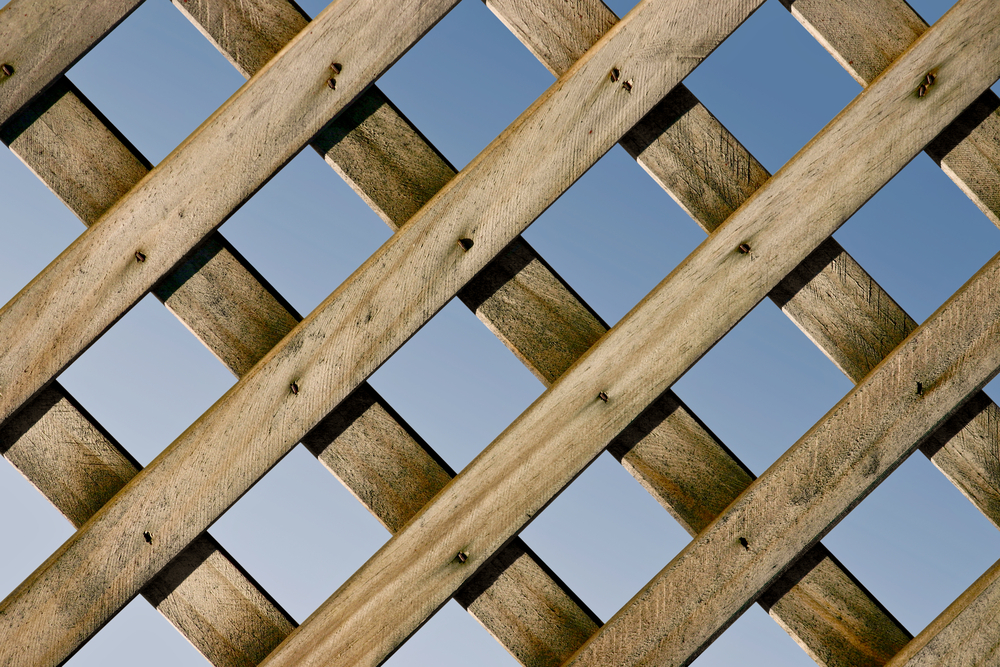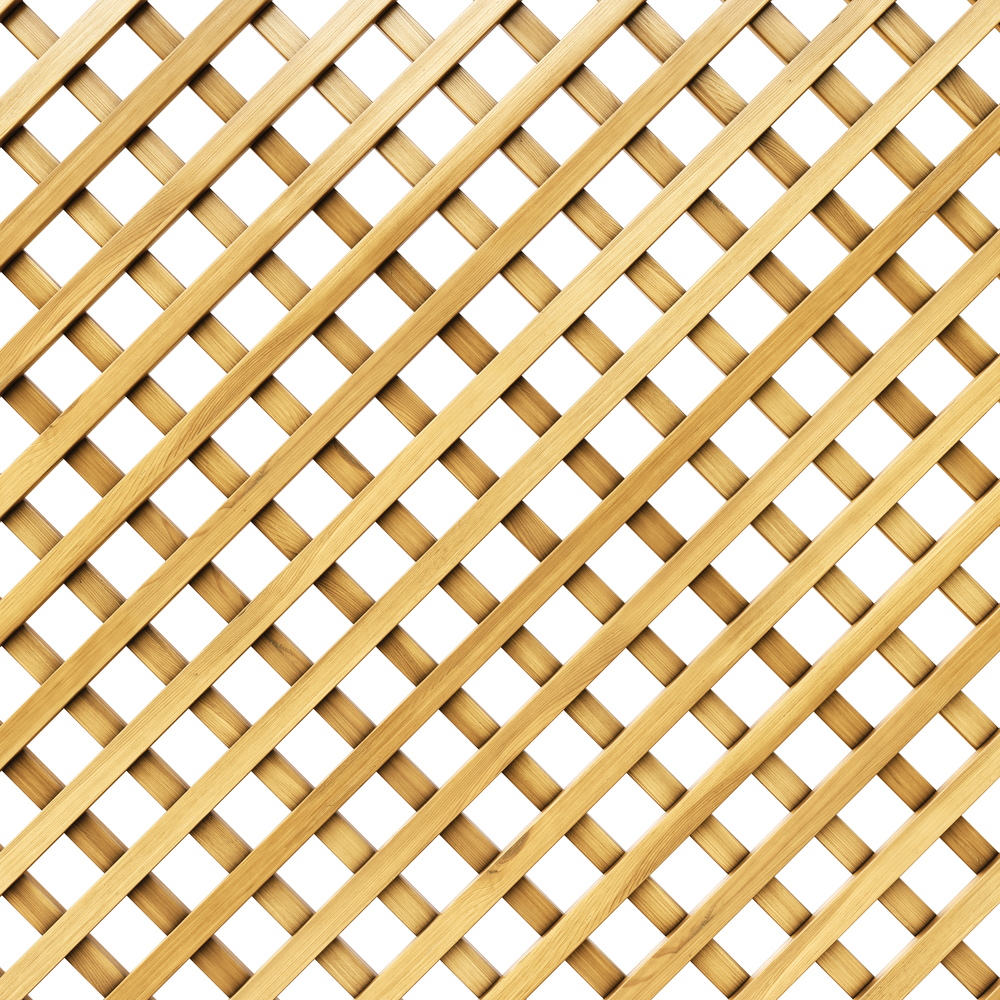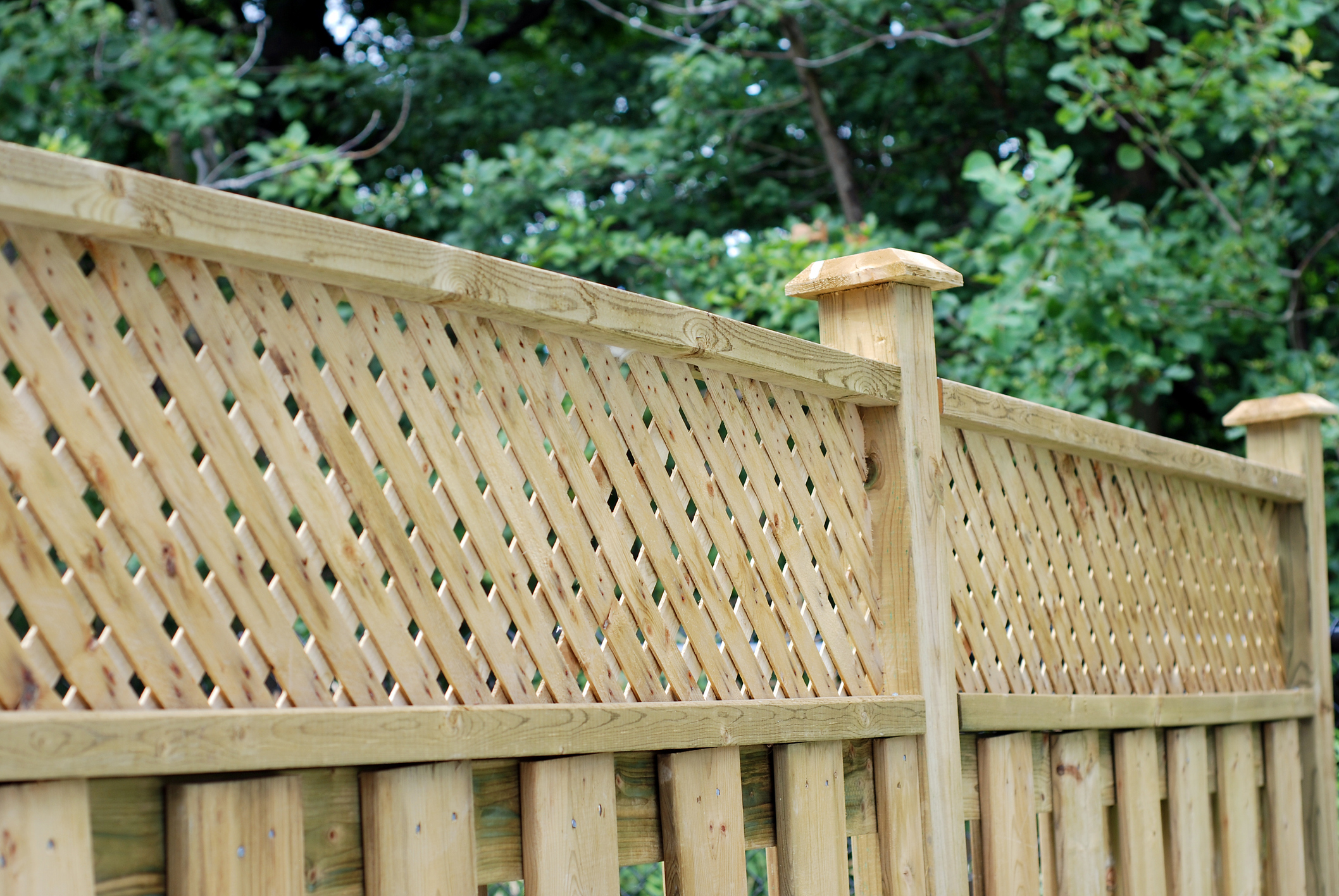Lattice fence panels are an excellent choice for many homeowners.
These types and styles of fences are:
- affordable
- easy to install
- last a long time
Because of the pattern of square-shaped flowers or diamond patterns and the range of colors available, the plants also offer many decorative elements to create a pleasant front or back yard aesthetic.
Some lattice fence panels are somewhat transparent, which offers little privacy to a home or garden. However, you can get lattice fences with partial wood slats and a solid metal or lattice top, offering your garden a modern and functional look without compromising privacy or enclosed space.
Please keep reading to learn whether bamboo lattice makes a good garden fence, how much it costs, and how to install it properly.
Does Lattice Make a Good Fence?
Lattice fences are a popular choice for homeowners because they are cheap to make yourself and offer a modern aesthetic to a front or backyard. Some benefits of a lattice fence include the following:
- One of the most affordable fences to DIY
- Offers a pleasant aesthetic
- Comes in a range of styles
- Lasts a long time (especially when made of vinyl)
- Low maintenance (when made of vinyl or plastic)
- Easy to paint
- Available in a range of colors
However, metal lattice and fence panels are not as strong and sturdy as other fences, like aluminum, wood slats, wrought iron, and chain link. Being made from thin boards or trellis, it doesn’t withstand high winds or routine impacts like pets jumping against it or playing ball games along the fence.
Before installing a custom lattice fence, check local building rules and regulations. Because some fences don’t offer the same level of privacy as a fully boarded fence, they are not allowed in certain areas unless they meet certain requirements. For example, they cannot be see-through until a certain height.
Additionally, even if the lattice style of fence is allowed in gardens in your state according to local rules, it’s a good idea to check with neighbors before installing the same style of fence in a backyard. While it can offer some security and create better aesthetics, it will disrupt the privacy of your plants, flowers, yard, and neighbors.

Is a Lattice Fence Cheaper?
Lattice fences are not cheaper when you purchase pre-made panels than most other types of fences. Wood lattice fence panels are cheaper than vinyl lattice fencing. This is because vinyl fences last longer, don’t require as much maintenance, and offer a cleaner aesthetic than wood lattice fencing.
The table below summarizes the costs per linear foot for the different types of fence panels available.
| Type of Fence | Cost Per Linear Foot |
| Chain Link | $15-$30 |
| Bamboo | $15-$25 |
| Wood | $15-$35 |
| Vinyl | $20-$45 |
| Aluminum | $22-$70 |
| Wrought Iron | $30-$55 |
| Lattice | $50-$180 |
However, building your lattice fencing on top of design ideas and panels using trellis and wooden slats can be significantly cheaper than other ideas and solid fence panels.
Untreated wood or plastic are the cheapest materials for building your lattice fence. Treated wood and vinyl panels/trellis’ are more expensive.
Is it Cheaper to Make Your Lattice?
Generally, building a lattice fence out of wood, bamboo, or vinyl materials is cheaper than installing a pre-built lattice gate or fence panel. Full-sized lattice gates and fence panels are quicker and easier to install, taking a few hours to install one panel and between 1-2 days to install a full backyard fence installation.
Making and installing your lattice fence will take significantly longer, as the fence needs to be built entirely from scratch. Depending on how fast you work and how large the yard is, making a DIY can take anywhere from a couple of days or a few weekends to several weeks.
On average, a wood lattice fence panel can cost between $50-$100 to purchase pre-built. Sizes available typically range between 6-8 feet for exterior fence panels. Naturally, larger-sized panels cost more than smaller lattice privacy fences do.
Vinyl panels are more expensive and come in various colors, including gray, green, white, light beige paint, and clay.
Vinyl lattice fence panels can cost between $120-$180.
When building your lattice fence, the materials can cost between $1.50-$24 per linear foot. Using plastic or untreated wood for your lattice fence is significantly cheaper than buying pre-treated wood or high-quality vinyl slats for ideas.

How Long Does a Lattice Fence Last?
Lattice fence lasts on three main things:
- which material it’s made from
- how well it’s constructed/installed
- how much impact it receives daily
Generally, lattice fences should last 10-15 years when installed properly and sealed with weatherproof paint and protection.
In areas with high winds or severe weather, lattice fences are not the strongest type of fence panel and can easily be damaged.
The strongest types of fence panels are made from iron, steel, or aluminum. Being relatively light and flimsy, they are also not ideal for yards where ball games occur, or pets jump the fences.
Vinyl lattice fences for gardens are stronger than natural wood ones for gardens and should last longer. They also require less maintenance (as they don’t need routine treatment to protect the natural wood) and are easier to clean than solid wooden garden panels.
How Do You Secure a Lattice Fence?
Here’s how to secure properly.
1. Measure Heights Properly
The most important part of securing lattice gardens with fence panels is properly measuring the heights and gaps in the cottage garden. According to building codes, you must install at the right width and height.
In most areas of the US, fences must be no more than 6 feet in height in a backyard and 4 feet in a front yard. This includes the combined height of the lattice panels installed atop a regular fence. Most areas allow fences up to 8 feet tall with a building permit from the local permit office.
To measure your fencing height properly, measure a level line through the tallest point of space you want your fence to cover. From the top of the postholder to that line, indicate your mark. Then, use that line to measure up to the top of the post. Subtract the measurement you come up with by 1 inch. Use this remaining measurement as your guide to cut the bottom post.
2. Install Postholders Evenly
Some homeowners skip the installation of postholders when installing a lattice fence, but this isn’t a good idea. Without these added supports, your post will be difficult to remove without getting stuck. Before securing your postholders, test them out to ensure they move easily in and out of the post holes.
When painting your deck and installing fencing, ensure your post holes and rails are set evenly apart. Having evenly spaced posts and rails ensures your deck and fences are stable, well-balanced, and easily removed, as needed.
To avoid knocking the decorative bricks and wood postholder boxes out of place, screw exterior screws on each side of the decorative wood postholders. If this task is neglected, the cement may gradually move the boxes out of alignment. You don’t want this space imbalance to become irreversible after the concrete cures everything in place.
3. Align Slats the Right Way
Don’t make the mistake of constructing your panels with the incorrect orientation of slats. Specifically, if you are making a square lattice, the horizontal slats must be placed behind the vertical slats. In most cases, your fencing will follow upward, so you’ll need the vertical slats stationed in front to accomplish this effectively.
Summary
Lattice fence panels and gates can be a great choice for many homes. When installing fences as a DIY project, the most important thing to remember is that adding a lattice to the wall on top of an existing one contributes to the maximum height and space allowed.
For example, if you have a 6-foot fence installed in the backyard and want to add a lattice top, you’ll need a building permit to request the addition in the US. However, this is allowed within most municipalities if the width is 5 feet and you want to install a 1-foot lattice top panel to enclose.




